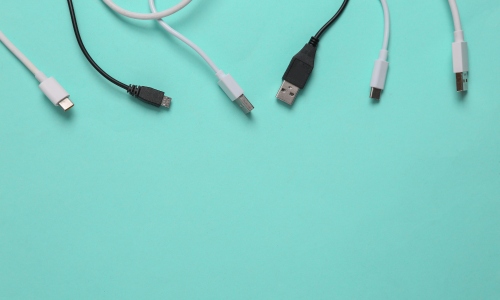There was a time that the idea of one common serial interface reached maturity way back in the late ’80s, and early ’90s and that was Apple’s outstanding serial interface IEEE 1394 (FireWire). It was referred to as the be-all, end-all for multiple types of digital connectivity.
The 1394 did everything — file transfers to AV production, home automation, and factory automation. It was considered a miracle at the time and was brought to center stage when the analog-to-digital transition took place for HDTV. It was easy to build and offered a far greener (e-waste) environment with the hope of reducing dozens of connecting devices to just one.
However, after more than two years and getting all stakeholders up to speed, this common serial interface was canned literally at the last moment, deferring consumer HDTV’s common interface to HDMI. We can say HDMI has worked diligently to expand its offerings under revisions over the years with today’s latest bandwidth for 8K and 48Gbps impressive.
Now, 20+ years later we are approaching yet another pivotal point towards a common serial interface, and that is with USB. The history of USB is somewhat lengthy so to get to the focus of the article we’ll jump to the present day.
USB has matured over the years and with that came higher speeds, a huge focus on power delivery (PD), and applications.
With the most recent USB-Type C cable, things really accelerated making it more robust in throughput and providing power that can now extend to as much as 240 Watts Extended Power Range (ERP). Much of this is supported by an internal feature called E Markers giving the cable some intelligence that allows both source and sink to configure device limits automatically.
Under USB 3.0 and beyond, these E Markers can configure power levels by knowing the gauge within the cable and delivering the voltage range as needed. These can vary from 5 Volts DC to as much as 48 Volts DC controlled by a feature called Adjustable Voltage Supply (AVS).
This is huge and can provide all kinds of options for home integration even though the main objective of the PD was to charge batteries at higher power levels primarily for cell phones, laptops, and other power-hungry devices. When you add all the other types of USB applications and features including Alternate Mode, it becomes obvious how impactful this can be. There may be a time when peripherals could be powered totally from the interface itself.
Besides these great advances, the one major boon was Apple’s decision to move the iPhone out from their very successful lightning connector to USB-Type C. Now the overall popularity of USB-Type C has skyrocketed and could become the main influence on whether there could be a future common serial interface for everything.
There are still some hurdles to get over and one is bandwidth. USB has done pretty well, starting at a mere 1.5 megabits (Mbps) to potentially Thunderbolt @80Gbps. Distance will be an issue just like it has been with other throughput data requirements similar to HDMI.
Technological improvements allowed for the semiconductor industry to provide hardware to extend these data rates throughout time, which will continue primarily due to demand.
Case in point: Three years ago we had a project case study with another type of interface in the datacenter market where data rates are off the charts. The study entailed a new semiconductor product that claimed to increase transmission distances for a 400Gbps signal.
It worked successfully, taking the PCB trace length from 1 to 4 inches — quite an accomplishment!
Only time will tell, but as for DPL Labs the demand for USB High-Speed testing keeps increasing, and we’ll continue testing these USB types of cables.







